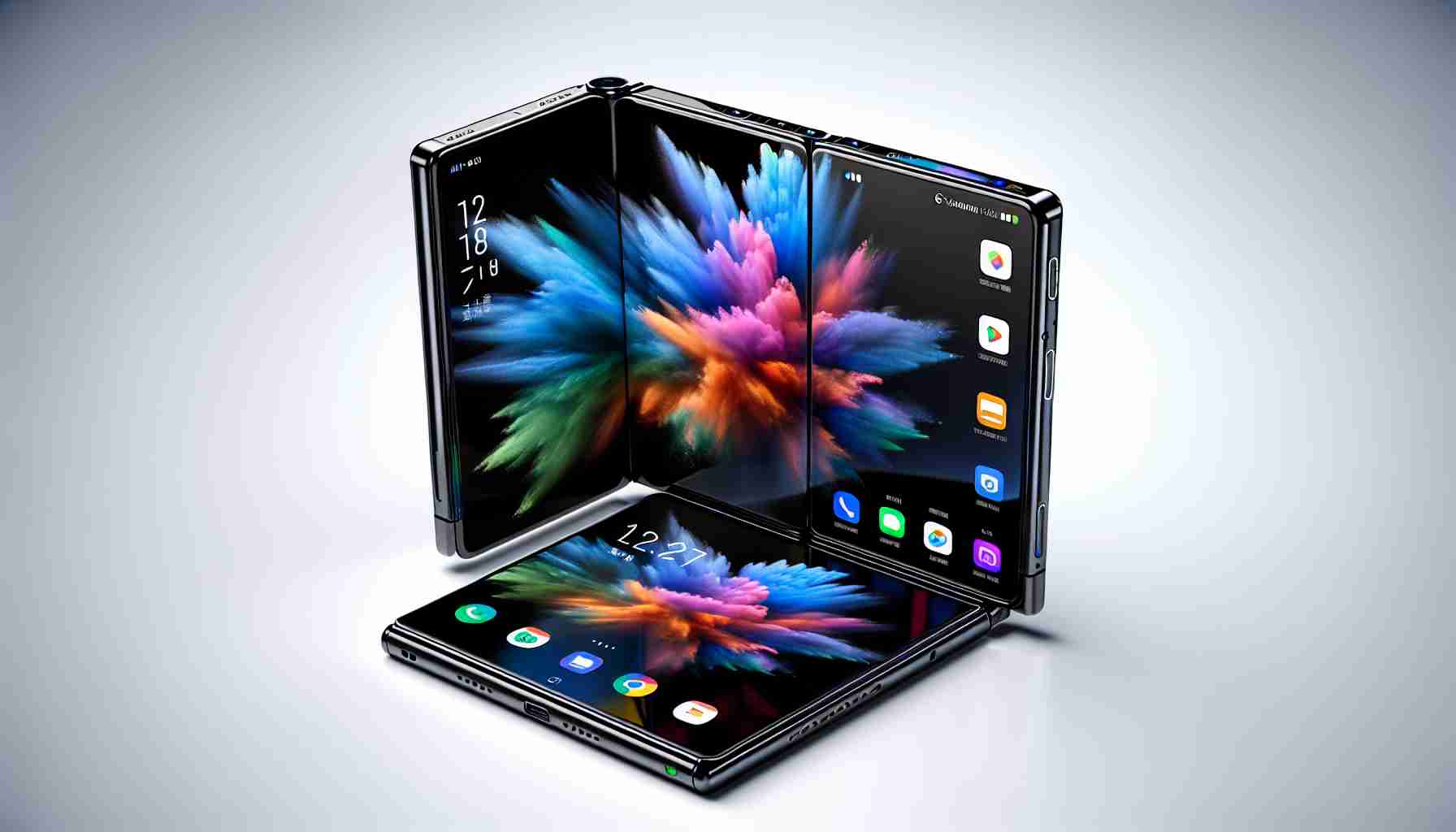Heralding a new era in mobile technology, TCL has introduced a groundbreaking triple-fold phone on the global stage at the Society for Information Display (SID) 2024 in San Jose, USA. This Chinese electronics giant unlocks a novel form factor with its “DragonHinge” mechanism that enables the device to bend into “G” and “Z” shapes.
Once unfurled, the device presents a sprawling 7.85-inch screen, akin to a standard tablet’s aspect ratio. A common concern with triple-fold gadgets, their bulky profile has been significantly addressed as TCL’s new brainchild boasts a slim 0.43mm thickness. Using pioneering Sensor Under Panel (SUP) technology, the smartphone facilitates 3D facial recognition capabilities, tucked beneath its foldable display, offering secure authentication for mobile payments and device unlocking.
Moreover, the SUP design does not compromise the visual integrity of the display, maintaining a uniform 420PPI pixel density across the board. Speaking of the screen prowess, it flaunts a versatile LTPO panel, with a variable refresh rate spanning from 1 to 120 Hz, optimizing power consumption and enhancing longevity.
As rumors swirl around tech giants like Huawei and Samsung exploring similar ventures, TCL’s unveiling could ignite a new competitive race. Samsung, ahead in the game, has already garnered approval for its three-fold screen patent, signaling a shift from the dual-hinge Galaxy Z Fold to a device transforming into a sizable tablet. Meanwhile, technology observers are keeping a keen watch for Huawei’s prospective launch, rumored to feature an expansive 10-inch display in their in-the-works foldable.
Important Questions and Answers:
1. What is the main innovation behind TCL’s new triple-fold smartphone?
TCL’s innovation lies in its “DragonHinge” mechanism, which enables the smartphone to fold in multiple configurations, specifically “G” and “Z” shapes, transforming the device into a tablet-size screen while maintaining a slim profile when unfolded.
2. What technology does the device use for facial recognition, and why is it significant?
The device employs Sensor Under Panel (SUP) technology for 3D facial recognition. This is significant because it allows the facial recognition sensors to operate through the foldable display, preserving the screen’s visual integrity and enabling a seamless design.
3. Who are TCL’s main competitors in the foldable smartphone market, and what are their potential offerings?
TCL’s main competitors include Huawei and Samsung. Samsung has procured a patent for a three-fold screen and is potentially developing a device that can transform into a sizable tablet. Huawei is rumored to be working on a foldable device with a 10-inch display.
4. How does TCL address the common concern of bulkiness in triple-fold devices?
TCL has addressed the issue of bulkiness by designing the triple-fold smartphone with a remarkably slim 0.43mm thickness when unfolded, making it comparable to conventional tablets in terms of portability.
Key Challenges or Controversies:
– Durability: Foldable screens are typically more prone to wear and tear compared to standard smartphones. Ensuring the device’s longevity despite its complex hinge mechanisms is a challenge.
– Software Optimization: Multi-fold screens require specialized software to make full use of their form factor for a seamless user experience. Developers will need to create apps that can adapt to various screen sizes and configurations.
– Cost: Complex technology like foldable screens can drive up manufacturing costs, which may make these devices less accessible to the average consumer.
Advantages and Disadvantages:
Advantages:
– Versatility: A device that can serve as both a smartphone and a tablet, offering flexibility depending on the user’s needs.
– Innovation: Includes cutting-edge technology like the SUP and LTPO panel, leading to better battery efficiency and screen quality.
– Compact Design: Despite being foldable, the device maintains a slim profile which enhances portability.
Disadvantages:
– Fragility: Multiple hinges and foldable screens may lead to greater susceptibility to damage.
– Price: Advanced technology in these devices typically results in a higher cost compared to standard smartphones.
– Software Ecosystem: There may be a lack of app support specifically tailored for multi-fold screens upon initial release.
For further reading on multifaceted technology and devices, visiting TCL’s official website might provide additional insights into their innovative offerings. However, please note that I cannot verify any URLs directly as my current capabilities restrict me from determining the validity of web addresses. Hence, I cannot provide a hyperlink to TCL’s website or any related page.
